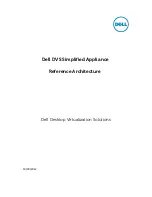
98 NAPT
Configuration
Software Configuration Guide Release 2.10, Revision 1.00
destined to the global interface should be forwarded to which hosts on the local network.
Furthermore a host can be specified to get all ICMP messages, namely the ICMP default server.
13 NAPT CONFIGURATION
13.1 Overview
This chapter provides a general overview of Network Address Port Translation and describes the
tasks involved in configuring it. For detailed information on command syntax and usage guidelines
for the commands listed in section “Configuring Network Address Port Translation Task List”, refer
to Chapter 10, “Profile NAPT Mode” of the SmartWare
Command Reference Guide
.
This chapter includes the following sections:
•
Introduction
•
Configuring Network Address Port Translation
•
NAPT Configuration Task List
13.2 Configuring Network Address Port Translation
Two key problems facing the Internet are depletion of IP address space and scaling in routing.
Network Address Port Translation (NAPT) is a feature that allows the IP network of an organization
to appear from the outside to use different IP address space than that which it is actually using.
Thus, NAPT allows an organization with not globally routable addresses to connect to the Internet
by translating those addresses into globally routable address space.
NAPT also allows a more graceful renumbering strategy for organizations that are changing service
providers or voluntarily renumbering into classless interdomain routing (CIDR) blocks. NAPT is
described in RFC 1631.
With SmartWare, Release 2.10, NAPT supports all H.225 and H.245 message types, including fast
connect and alerting as part of the H.323 version 2 specification. Any product that makes use of these
message types will be able to pass through a SmartWare, Release 2.10, NAPT configuration without
any static configuration.
Note:
H.323 voice packets will not pass through a SmartWare, Release 2.10, NAPT configuration.
As a solution to the connectivity problem, NAPT is practical only when relatively few hosts in a stub
domain communicate outside the domain at the same time. When this is the case, only a small subset
of the IP addresses in the domain must be translated into globally unique IP addresses when outside
communication is necessary, and these addresses can be reused when no longer in use.
13.3 NAPT Configuration Task List
To configure NAPT, perform the tasks in the following sections:
•
Creating a NAPT Profile
•
Adding a Static NAPT Entry
•
Removing a Static NAPT Entry
•
Configuring an ICMP Default Server
•
Removing an ICMP Default Server
•
Configuring an NAPT Interface
•
Display NAPT Configuration Information
13.4 Creating a NAPT Profile
A NAPT profile can be bound to the global interface. The profile defines which packets to ports
Summary of Contents for SmartWare Release 2.10
Page 2: ...2 Legal Notice Software Configuration Guide Release 2 10 Revision 1 00...
Page 15: ...Terms and Definitions 15 Software Configuration Guide Release 2 10 Revision 1 00...
Page 218: ...218 PPP Configuration no shutdown Software Configuration Guide Release 2 10 Revision 1 00...
Page 272: ...272 Tone Configuration Software Configuration Guide Release 2 10 Revision 1 00...
















































